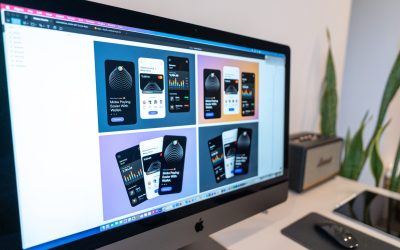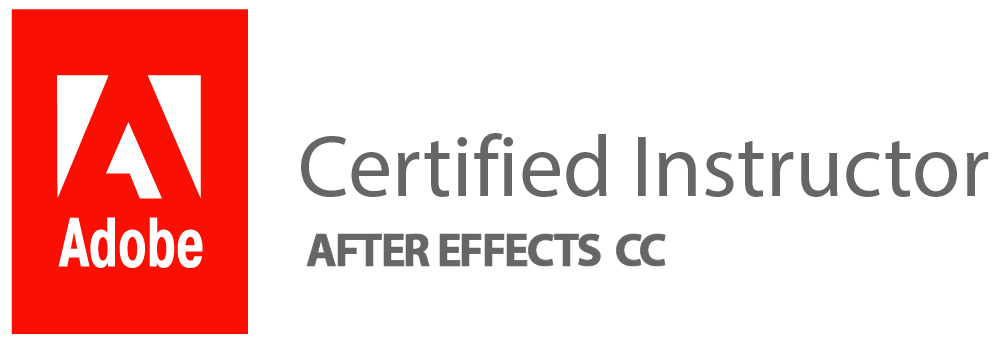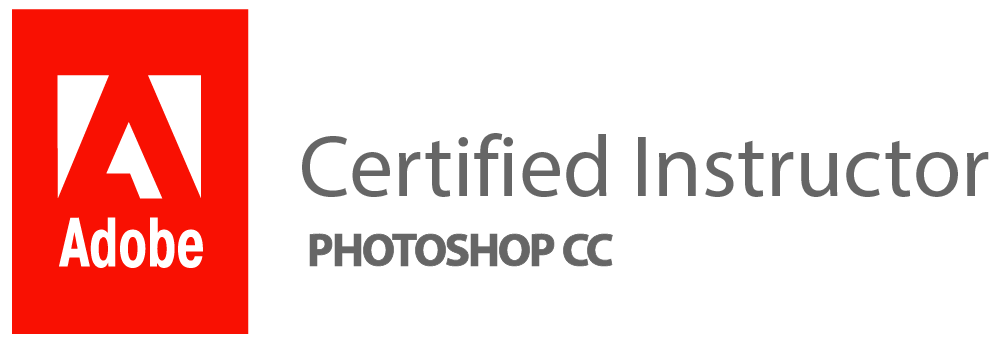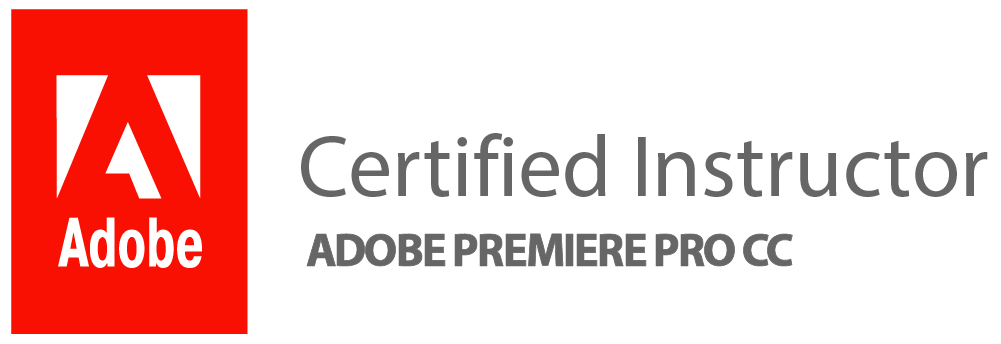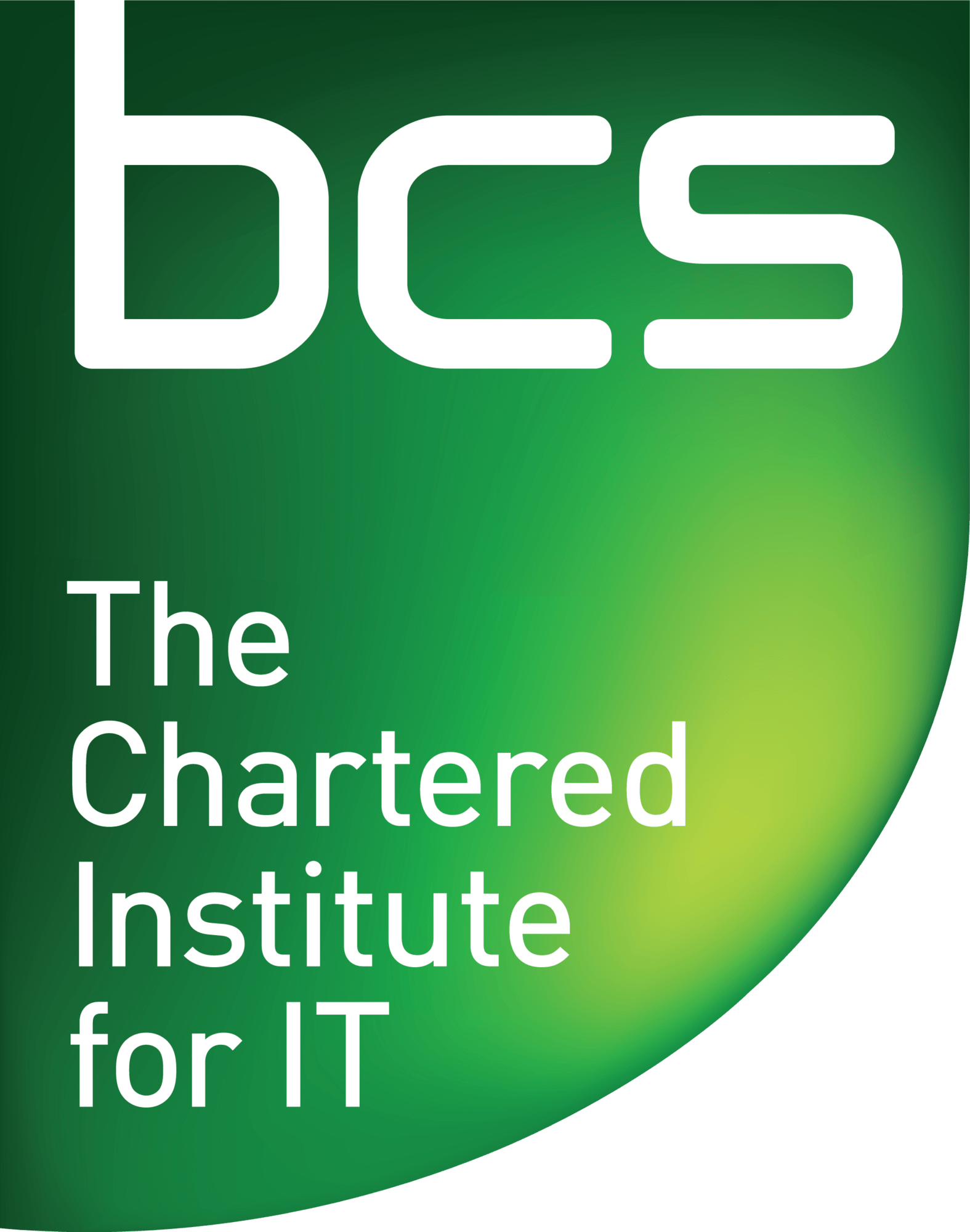What Skills Do Graphic Designers Need? What graphic design and visual communication skills do you need to know
Graphic design and visual communication are two closely related fields that require a wide range of skills to master. First, you need to know how to use graphic design software such as Adobe Illustrator, Photoshop, and InDesign, which are industry-standard tools for creating graphics, illustrations, and layouts. You also need to have a good understanding of typography and colour theory because they play an essential role in conveying your message effectively.
Secondly, having a deep knowledge of current design trends is crucial if you want your work to remain relevant in the constantly evolving digital landscape. Knowing how to work with different file formats like JPEGs, PNGs, or GIFs will ensure that your designs look just as good on mobile devices as they do on desktop screens.
Lastly, being able to communicate visually is another critical skill that every graphic designer should possess. This means knowing how to organize information in a clear and concise way using visuals such as infographics or diagrams. By mastering these skills – software proficiency, current design trends awareness, file format handling expertise and visual communication prowess – you can build a successful career in graphic design or visual communication.
Graphic design: The basics
In graphic design and visual communication, there are various principles that you need to learn to create an effective design. The basics of graphic design include colour theory, typography, composition, and layout. Understanding the use of colours is essential in creating a visually appealing design. You should know how to choose the right colour palette that can convey emotions or messages effectively. Typography is also important as it affects readability and consistency in the overall look of your design.
Composition refers to how elements are arranged within a design space. It involves balance, contrast, and hierarchy, which helps guide the viewer’s eye through the content smoothly. The layout is another crucial aspect in graphic designing as it determines how elements are organized on a page or screen – this includes images, text boxes or callouts.
In conclusion, if you want to become proficient in graphic designing and visual communication, mastering these basics will be a great start for you. There’s always more to learn beyond these principles, but understanding them will give you an edge when creating designs that effectively convey your intended message or emotion with clarity and impact.
Typography: How to use type to create an effective message
Typography is crucial in creating an effective message through graphic design and visual communication. It involves more than just choosing a font that looks aesthetically pleasing. The right typography can set the tone for your message, evoke emotions, and even influence how your audience perceives your brand or product.
One tip for using type effectively is to pay attention to hierarchy. Headlines should be bolder and have larger font sizes compared to body text. This helps guide the reader’s eyes towards the most important information first. Another tip is to use contrast in typography, such as pairing a bold sans-serif font with a thin-serif font for emphasis.
Lastly, make sure that your typography aligns with your brand personality and message. For example, using playful and creative fonts may work well for a children’s toy brand but would not be appropriate for a law firm’s website. By considering these factors when choosing typography, you can create an effective message that resonates with your target audience while also accurately representing your brand or product.
Layout: How to make your layout look appealing and efficient
One of the most important aspects of graphic design and visual communication is understanding how to create an appealing and efficient layout. A good layout should be visually balanced, with elements that complement each other rather than competing for attention. This involves using a combination of size, colour, contrast, alignment, and whitespace to guide the eye through the page.
Another key factor in creating an effective layout is understanding hierarchy. This means using typography and visual cues like the bold or italic text to highlight the most important information on the page. It also involves organizing content in a logical order so that readers can easily follow along.
Finally, it’s important to consider usability when designing a layout. A well-designed layout should make it easy for users to find what they’re looking for without feeling overwhelmed or confused. This involves simplifying navigation, minimizing clutter, and ensuring that all elements are clearly labelled and intuitive to use. By mastering these principles of layout design, you can create visually stunning designs that are both functional and user-friendly.
Graphics: How to use graphics effectively
One of the most critical aspects of visual communication is knowing how to use graphics effectively. An essential rule for any design project is ensuring that every graphic element has a purpose and helps the audience understand the message better. Whether it’s a logo, an illustration, or an infographic, each graphic must contribute to telling a story and reinforcing the brand’s identity.
To use graphics effectively, consider the following tips: First, choose visuals that complement your copy rather than distract from it. Secondly, ensure that all images and illustrations are high-quality and relevant to your brand or message. Thirdly, make sure you optimize your graphics for various platforms such as websites or social media.
Lastly, invest in learning more about visual hierarchy and composition principles to create visually appealing designs that are easy on the eyes. Remember that using graphics correctly can have a significant impact on how people interact with your content; therefore, take time to learn how best to apply them when communicating with your audience.
Web Design: How to create a website that looks great and functions well
When it comes to web design, creating a website that looks great and functions well is essential. The key to designing a successful website is understanding the user’s needs and expectations. First, you need to create an intuitive layout that guides users through the site and makes it easy for them to find what they’re looking for. This includes clear navigation menus, headings, and subheadings.
Next, you’ll want to pay attention to the visual elements of your design. A visually appealing website not only draws in visitors but also keeps them engaged with your content. When designing a website, consider colour schemes, typography choices, and imagery carefully. You don’t want to overwhelm visitors with too many design elements or distract them from your main message.
Lastly, make sure your website functions well by testing it on different devices and browsers. It’s important that your site is responsive across all platforms so that users can access it from their desktops as well as mobile devices such as smartphones or tablets without any issues. Taking these steps will help ensure that you create a functional and visually appealing website that meets the needs of both you and your users.
Graphic design and visual communication are important skills that can be used to communicate your ideas, feelings, and ideas of what you want your brand to look like.
Graphic design and visual communication are incredibly important skills to have in today’s world, where everything is becoming increasingly digital. In graphic design courses, you’ll learn how to use various software tools to create visually appealing designs that communicate your message effectively. This includes designing logos, brochures, websites, social media graphics and much more.
The ability to communicate through visuals is a vital skill in many industries, such as advertising, marketing and web design. Through visual communication courses, you’ll learn about the principles of design like colour theory, typography and layout, which will enable you to create effective designs for print or digital media.
In addition to technical skills taught in both graphic design and visual communication classes, you will also develop strong critical thinking skills. You’ll learn how to analyze problems from different perspectives and come up with creative solutions that meet your target audience’s needs. These skills can be applied not just in the professional realm but also in everyday life situations where clear communication is crucial for success.
The Purpose of Graphic Design: To give your brand a visual identity.
In graphic design and visual communication, you learn the importance of creating a visual identity for your brand. A strong visual identity is essential in today’s competitive business environment because it helps to differentiate your brand from the rest. Graphic design can help to create a unique logo, typography, colour scheme, and imagery that will help your audience recognize and remember your brand.
Moreover, graphic design plays a significant role in establishing brand consistency across all marketing channels. When used consistently throughout different mediums like social media posts, website banners or billboards – this helps build brand recognition over time. Additionally, good graphic design can also improve user experience by making information easier to understand through clear visuals like infographics.
Overall, understanding the purpose of graphic design is crucial for businesses that want to stand out from their competitors while building an engaging and memorable customer experience. By creating a strong visual identity with effective use of colours, typography and imagery- brands can leave a lasting impression on their target audience, which ultimately leads to increased success in the marketplace.
The Elements of Graphic Design: Fonts, Colours, Graphics, and Symbols.
In graphic design and visual communication, there are several elements that play a crucial role in creating an effective design. These elements include fonts, colours, graphics, and symbols. Each element has its unique purpose and should be used thoughtfully to convey the intended message.
Fonts are one of the essential elements of graphic design as they help communicate the tone and personality of the message. They can elicit different emotions depending on their style and size. Colours, on the other hand, evoke specific feelings in viewers based on their cultural background or personal perception. In choosing colours for a design project, designers need to consider the colour theory to ensure that they pick colours that have a desirable impact on their audience.
Graphics refer to visual materials such as images, illustrations or videos used in graphic designs. These visuals anchor messages into real-life contexts, making them more memorable than plain texts would do with ease; Symbols, like logos or icons, illustrate concepts rather than words can not explain better in some cases., and make it easier for people who speak different languages to understand what is being conveyed through a design project. By using these elements effectively, designers can create visually appealing designs that effectively communicate meaning while capturing their audience’s attention at first glance.
The Style of Graphic Design: Casual, juveniles, or formal?
In graphic design, the style you choose to use can greatly affect how your message is perceived. Casual styles are often seen as approachable and friendly, while formal styles can give an impression of professionalism and seriousness. Juvenile styles may be appropriate for designs aimed at children or young adults, but they can also come across as unprofessional in other contexts.
When considering which style to use in your designs, it’s important to take into account who your target audience is and what message you want to convey. For example, a casual style might be appropriate for a brand aimed at younger consumers or for social media posts that aim to engage with followers on a more personal level. A formal style might be more appropriate for documents such as business proposals or legal contracts.
Ultimately, the choice of graphic design style is up to you as the designer or business owner. However, understanding the different effects that each style can have on your audience will help you make informed decisions when creating visual communications that best represent your brand and its values.
The Use of Graphics in Graphic Design: To add excitement or to control the tone of a document?
Graphic design is a field that requires not only creative thinking but also the ability to convey a message using visual elements. One such element is the use of graphics. Graphics can be used to add excitement and visual interest to a document or design, but they can also be used to control the tone of the piece.
Excitement can be added through the use of bright colours, bold lines and shapes, and dynamic compositions. This type of graphic design is often seen in advertising materials where catching someone’s attention quickly is key. However, graphics can also be used more subtly to establish an overall tone for a piece. For example, muted colours and soft curves might suggest a calm and peaceful atmosphere, while sharp angles and contrasting colours could evoke tension or urgency.
In addition to establishing tone, graphics can help guide the viewer’s eye through a document or design. By strategically placing images or using lines and arrows, designers can direct attention towards important information or create visual hierarchies within their work. Ultimately, whether it’s adding excitement or controlling tone, careful consideration should be given when deciding how best to incorporate graphics into any graphic design project.
How to Choose the right Graphic Design Format: A Chooser’s Guide.
When choosing the right graphic design format, it is important to first consider the intended purpose of the design. Will it be used for print or digital media? Different formats are optimized for different uses, so it’s crucial to determine where and how the design will be displayed before making a final decision.
Additionally, understanding file types and their capabilities can greatly impact your choice of format. For example, vector graphics are great for logos and illustrations that require scalability without losing quality, while raster images work better for high-resolution photographs. It’s also important to consider file size and compression when working with digital formats to ensure optimal loading times.
Lastly, it’s essential to keep in mind any specific guidelines or requirements set by the client or platform where the design will be displayed. Certain social media platforms may have specific image size requirements, while printers may require certain colour modes or bleed areas. By taking all these factors into consideration when choosing a graphic design format, you can ensure that your designs effectively communicate their intended message across all mediums.
Application Design By Graphic Designers
In graphic design and visual communication, you learn the fundamental principles of design, including colour theory, typography, layout design, and composition. These elements are critical in application design as they help create a visually appealing and effective user interface. A good UI is essential for any application as it helps users navigate through the app with ease.
Graphic designers use their knowledge of these principles to create aesthetically pleasing applications that are easy to use. They ensure that the visual hierarchy is well-defined so that users can easily find what they need. In addition to this, graphic designers also incorporate branding elements into the app design to give it a unique identity.
Overall, application design by graphic designers involves combining their knowledge of visual communication and user experience design to create an intuitive and visually stunning user interface. A well-designed app can enhance user engagement and improve overall usability – making graphic designers a valuable asset in the tech industry.
Learn To Design Apps And Websites
Learning to design apps and websites is a fundamental skill in today’s digital age. Graphic design and visual communication are two essential aspects of the design process. In graphic design, you learn how to create visually appealing designs by using typography, colour, composition, and other elements that communicate a message effectively. Visual communication focuses on creating graphics that convey information.
When it comes to designing apps and websites, graphic design skills are necessary to create a cohesive brand identity through logos, colour palettes, typography choices, and more. You also need knowledge of user interface (UI) and user experience (UX) principles to ensure your app, or website is easy for users to navigate.
In addition, understanding HTML and CSS coding languages is useful when designing websites since it allows you to customize layouts according to your vision. By mastering these key skills in graphic design and visual communication techniques as well as gaining practical experience with web development technologies such as HTML/CSS/JavaScript or mobile app development frameworks like React Native, you can become an effective designer who can make an impact in the digital world.
Graphic design is in demand.
In today’s digital world, graphic design is a valuable and in-demand skill. It encompasses a wide range of fields, including branding, marketing, web design, and print media. By studying graphic design and visual communication, students learn how to create effective visual content that captures people’s attention.
One important aspect of graphic design is understanding the principles of colour theory and typography. These elements can greatly impact the message being conveyed by a particular piece of visual content. Additionally, students will learn about composition and layout techniques for both print and digital mediums.
Another key area within graphic design is user experience (UX) design. This involves creating interfaces that are intuitive and easy to use for users. Through UX research methods such as surveys or focus groups, designers can gain insight into what their target audience wants in terms of functionality when using digital products or services.
Overall, studying graphic design provides a diverse set of skills that can be applied across many industries. With an increasing demand for visually appealing content in today’s society, there are plenty of career opportunities available for those who have honed their craft in this field.
Web Design is in demand.
In today’s world, where the internet has become an integral part of our lives, web design has become a highly sought-after skill. With businesses looking to establish their online presence and users demanding websites that are not only functional but also visually appealing, the demand for skilled web designers continues to rise.
In graphic design and visual communication courses, students learn a variety of skills that can be applied to web design. These include colour theory, composition, typography, and user interface (UI) design. By mastering these skills, students can create engaging website designs that meet both the aesthetic preferences of clients and the usability requirements of end-users.
Moreover, with mobile devices becoming increasingly popular for browsing the internet, responsive web design has become essential to ensure that websites function seamlessly on all screen sizes. This involves designing flexible layouts and implementing technologies such as CSS media queries to adapt pages to different screen resolutions.
Overall, with its high demand and scope for creativity and innovation in designing engaging and functional websites, web design is an exciting career path for those who enjoy combining technical skills with artistic flair.
What is UI design? What is UX design?
In graphic design and visual communication, you will learn about two key components of designing for digital platforms: user interface (UI) design and user experience (UX) design. UI refers to the visual elements and layout that users interact with on a screen, such as buttons, menus, forms, and images. UX encompasses the entire process of designing how users interact with a product or service, including user research, prototyping, usability testing, and iteration.
Good UI and UX design are essential for creating products that meet the needs of users while also achieving business goals. A well-designed UI should be visually appealing while also being intuitive and easy to navigate. On the other hand, UX designers focus on understanding user behaviour in order to create meaningful interactions that align with their goals.
Overall, learning about UI and UX design can help graphic designers create effective digital designs that solve real-world problems for users. By integrating these principles into their work from an early stage of project development through completion, designers can ensure their designs are both aesthetically pleasing and functional.
Visual Communication
In graphic design and visual communication, you will learn how to convey messages through images, typography, and other design elements. This includes understanding colour theory, composition, layout, and branding principles. You will also be taught how to use various software tools such as Adobe Photoshop, Illustrator, and InDesign.
Effective visual communication is essential in today’s digital age, where attention spans are shorter than ever before. Visuals can capture a viewer’s attention quickly and convey information effectively in a way that text alone may not be able to achieve. In addition to traditional print media such as magazines and newspapers, visual communication skills are also highly valued in fields like web design, social media marketing, advertising campaigns, and even video production.
As a student of graphic design or visual communication, you will develop skills that allow you to create compelling designs that communicate your message effectively. Whether it is designing logos for businesses or creating promotional graphics for events or social media platforms, the ability to visually communicate a brand’s message is crucial in today’s world of modern marketing techniques.
Visual Communication Vs Graphic Design
In graphic design, you learn how to create visually pleasing designs that communicate a message or idea. This involves understanding typography, colour theory, layout design, and software skills like Adobe Photoshop and Illustrator. The goal is to create a cohesive and effective visual representation of the message being communicated.
Visual communication goes beyond just graphic design as it encompasses all forms of communication that use visuals. This includes everything from photographs and videos to infographics and charts. In visual communication courses, you learn how to effectively use these visuals in order to convey a message or tell a story. This involves learning about composition, framing techniques, lighting techniques, and even storytelling principles.
While there is an overlap between the two fields, graphic design focuses more on creating specific designs for specific purposes, while visual communication is more focused on using visuals in general to communicate ideas. Both are important skills for any marketer or communicator looking to effectively convey their messages through visuals.
Visual Communication Vs Web Design
In graphic design and visual communication, you will learn the principles of design that are necessary for creating effective and appealing visuals. These include colour theory, typography, composition, balance, contrast, hierarchy, and space. With these principles in mind, designers can create visually stunning graphics that capture attention and communicate messages effectively.
Web design is a subset of visual communication that focuses on designing websites specifically. In web design courses, students learn how to create user-friendly interfaces that are easy to navigate and visually engaging. Skills taught in web design courses include coding languages like HTML and CSS as well as software programs such as Adobe Photoshop or Illustrator.
Although there is some overlap between graphic design and web design when it comes to visual communication skills such as layout and typography, the two fields differ greatly in terms of their purpose. Graphic designers often work on print materials like magazines or billboards, while web designers focus on designing digital content such as websites or mobile applications. Ultimately both fields aim to use visual elements to communicate information effectively but have different mediums with which they work.
Visual Communication Vs UI UX
Visual communication and UI/UX design are two different fields of study that share some similarities but have distinct differences. Visual communication deals with the use of visual elements to communicate a message, idea or concept. This can be done through print media, digital media, animation or even product packaging. UI/UX design, on the other hand, focuses on designing user interfaces and experiences for digital products such as websites or mobile apps.
While both fields require an eye for aesthetics and creativity, they differ in terms of their objectives. Visual communication seeks to convey a message effectively while creating an emotional impact on the viewer, whereas UI/UX design aims to create an intuitive user experience that is easy to navigate and understand.
Graphic designers learn about colour theory, typography, composition and other design principles when studying visual communication. They also learn how to use software like Adobe Photoshop, Illustrator and InDesign to create visually appealing designs that communicate a specific message. Students studying UI/UX design usually focus more on user research, wireframing, prototyping and usability testing in order to create effective user experiences.
In conclusion, while both visual communication and UI/UX design share some similarities, they have distinct differences in their areas of focus, making them unique disciplines within the broader field of design.
Graphic Design And Branding
In graphic design and branding, you will learn how to create visual assets that communicate a particular message or story. This involves the use of typography, colour theory, composition, and other design principles to capture the essence of a brand or product. You’ll also gain proficiency in various software applications such as Adobe Illustrator, Photoshop, and InDesign to produce high-quality designs.
Moreover, in this field of study, you will develop an understanding of branding strategies used by companies across different industries. It’s essential to recognize that effective branding goes beyond just creating logos – it entails developing a cohesive visual identity that aligns with the company’s values and resonates with its audience.
Overall, graphic design and branding are crucial components in building a strong brand image for any business. The knowledge acquired in this field provides an excellent foundation for anyone interested in pursuing a career as a graphic designer or brand strategist.
Visual Communication And Branding
In graphic design and visual communication, students learn about the power of branding through visual elements. A brand’s logo, colour scheme, font choices, and imagery can all contribute to how it is perceived by consumers. Visual communication techniques are used to create a consistent brand identity across various mediums, such as print ads, websites, social media platforms or even physical stores.
Visual storytelling is also an essential component of branding. It involves using images or videos to tell a story that connects with the customer emotionally. The use of strong visuals can make a brand more memorable and relatable.
Overall, in graphic design and visual communication courses, students learn how to create effective branding strategies through the use of visual elements that communicate a brand’s message clearly and consistently across different channels. They gain an understanding of how important it is to create visually appealing content that resonates with their target audience while also remaining true to the company’s values and vision.
Graphic Designer Software: Adobe Photoshop, Adobe Illustrator, Adobe InDesign
Graphic design and visual communication are two fields that go hand in hand. As a graphic designer, it is essential to have the necessary skills and knowledge of various software tools used in the profession. Adobe Photoshop, Illustrator, and InDesign are some of the most popular graphic design software used by professionals worldwide.
Adobe Photoshop is widely considered the industry standard for photo editing and manipulation. It is an excellent tool for creating digital art, photo retouching, and compositing. With a wide range of features like layers, filters, masks, blend modes, and more at your disposal- you can create stunning visuals with just a few clicks.
Adobe Illustrator is another powerful vector-based graphics editor that allows designers to create logos, icons, and typography designs easily. The software comes with robust drawing tools such as the shape builder tool and pen tool, which helps in creating smooth curves quickly. Additionally,
Illustrator also supports multiple artboards allowing users to create multiple variations of their designs simultaneously.
Last but not least, Adobe InDesign is crucial when it comes to layout designing projects like magazines or books with its formatting options that include style sheets, paragraph styles or master pages offering consistency throughout the project, making it easier for designers to work on larger-scale projects without losing quality over time.
In conclusion- learning these three software programs will undoubtedly help aspiring graphic designers gain an edge over their competition while delivering eye-catching designs that meet clients’ needs effectively.
Website And Application Builder Software: Figma, WordPress, Elementor.
In graphic design and visual communication, students are often taught how to use website and application builder software such as Figma, WordPress, and Elementor. These tools are essential for creating visually appealing websites and user-friendly applications.
Figma is a popular tool among designers for its collaborative features that allow multiple team members to work on the same project simultaneously. It also offers an extensive library of design elements that can be customized to fit any brand or style. Moreover, it provides an intuitive interface that makes it easy for beginners to use.
On the other hand, WordPress is a widely used content management system (CMS) that allows users to create and manage their own websites without coding knowledge. It offers thousands of themes and plugins that can add functionalities such as e-commerce capabilities or social media integration to a website.
Lastly, Elementor is a drag-and-drop page builder plugin for WordPress that allows users to easily create custom pages using pre-designed templates or by starting from scratch. Its visual editor makes it easy for anyone – even those without technical expertise – to make changes quickly and effectively.
Overall, these website and application builder software tools play an important role in the field of graphic design and visual communication by enabling designers to create stunning visuals while also providing functionality for users.
Motion Graphics
Motion graphics is an essential aspect of graphic design and visual communication. It involves the creation of moving images or animation that communicates a message to the audience. In order to excel in this field, designers need to have a solid understanding of fundamental design principles, including colour theory, composition, typography, and visual hierarchy.
Additionally, motion graphics designers should also possess skills in software such as Adobe After Effects and Cinema 4D. These tools allow designers to create dynamic animations that can be used in various types of media content, like commercials or explainer videos.
Lastly, motion graphics designers should be able to work collaboratively with other members of the creative team. They need to understand how their work fits into the larger project goals and communicate effectively with other professionals such as copywriters or sound technicians.
Overall, mastering motion graphics requires a combination of technical proficiency and artistic talent. With these skills under their belt, designers will be able to create visually stunning animations that captivate audiences across various mediums.
Motion Graphics After Effects
In graphic design and visual communication, one of the most important skills to master is motion graphics. Motion graphics allow designers to create visually appealing and engaging content that can convey complex information in a simple and easy-to-understand way. After Effects is one of the most popular software programs used for creating motion graphics.
With After Effects, designers can create animations, typography, and special effects that can be integrated seamlessly into video projects. This software is particularly useful for creating explainer videos or other instructional content because it allows designers to break down complex ideas into simpler components that are easier to digest.
To become proficient in using After Effects for motion graphics, designers need to have a strong understanding of keyframe animation techniques as well as an eye for design aesthetics. They should also be familiar with different types of media formats and how they interact with each other within the program. With these skills under their belts, designers can create compelling visual content that engages audiences and communicates key messages effectively.
Digital Illustration
Digital illustration is an essential component of graphic design and visual communication, offering designers the opportunity to express their creative ideas in a variety of digital mediums. Through digital illustration, designers can produce high-quality, detailed images that are easily scalable across different media platforms. Some of the key skills learned during a course in graphic design and visual communication include mastering the use of digital drawing tools and techniques for creating vector graphics and bitmap images.
In addition to developing technical skills, students also learn about important concepts such as colour theory, composition, typography, and branding. These elements are crucial for creating visually effective designs that communicate a message effectively to an audience. By understanding how to use these tools correctly when designing digital illustrations, designers can create powerful visuals that capture attention and convey messages clearly.
Overall, digital illustration is a core component of any comprehensive graphic design education program. As technology continues to evolve at breakneck speed, it’s essential for aspiring designers to understand how best to harness these new tools in order to produce innovative work that resonates with audiences across multiple platforms.
Digital Painting
Digital painting is a popular technique used in graphic design and visual communication. Unlike traditional painting, digital painting is done on a computer using specialized software and tools. This technique offers endless possibilities for artists as they can easily undo mistakes, experiment with different colour palettes, and create complex designs that are impossible to achieve with traditional methods.
One of the most important skills you’ll learn in digital painting is how to use different brushes and techniques to achieve the desired effect. For example, you may use a soft brush with low opacity to create subtle shadows or highlights or a hard brush with high opacity for crisp lines and details. You’ll also learn how to work with layers, which allows you to add depth and complexity to your artwork by separating different elements of your design.
Another crucial aspect of digital painting is colour theory. Understanding how colours interact with each other can help you create harmonious designs that evoke specific emotions or moods. By learning about colour temperature, complimentary colours, and other concepts related to colour theory, you’ll be able to make informed decisions when choosing your colour palette for each project. Overall, digital painting is an essential skill for any graphic designer or visual communicator who wants to create stunning artwork that stands out from the crowd.
What is a graphic designer portfolio?
A graphic designer portfolio is a collection of design work produced by a graphic designer. It is an essential tool for any graphic designer looking to showcase their skills, creativity, and ability to solve complex visual problems. A well-crafted portfolio is often seen as the key to securing new clients or landing a job in the highly competitive world of graphic design.
In graphic design and visual communication courses, students learn how to create effective designs that communicate messages visually. They are taught various software programs such as Adobe Illustrator, Photoshop, and InDesign that allow them to create digital designs using typography, imagery, colour theory, and layout composition, among other things. In addition to technical skills development, they are also trained on how to present and market their work in a professional manner.
As such, creating an impressive portfolio requires not only strong design skills but also excellent presentation skills, including storytelling abilities, as designers need to articulate their creative approach and rationale behind their designs effectively. A good portfolio should be well-organized, showcasing various projects completed with accuracy and attention to detail. Ultimately the goal is for prospective clients or employers reviewing a designer’s portfolio can easily understand what they will bring if hired for future projects.
What should I include in my portfolio?
When it comes to building a portfolio in the field of graphic design and visual communication, there are certain elements that can make your work stand out. Firstly, it is important to include a variety of projects that showcase your skills and expertise within different areas of design. This could range from logo designs, branding materials, website layouts, packaging designs and more.
Another key aspect to consider is the quality of your work. Your portfolio should feature high-quality images or samples that are easy to view and demonstrate your attention to detail. Additionally, be sure to include some background information on each project, such as the client brief, target audience and any constraints you had while working on the project.
Lastly, including testimonials or comments from previous clients or employers can provide valuable feedback about your work ethic and abilities as a designer. Overall, a well-rounded portfolio that showcases your creativity and technical skills will help you stand out in this competitive industry.
What are some tips for designing an effective portfolio?
When it comes to designing a portfolio, there are a few key things that you need to consider. Firstly, you want to make sure that your portfolio is clean and easy to navigate. This means using a simple layout with plenty of white space and clear headings for each project.
Secondly, it’s important to choose the right projects for your portfolio. You want to showcase your best work but also demonstrate versatility in terms of style and medium. Be selective when choosing which projects to include, and make sure they all have a cohesive theme or thread running through them.
Finally, be sure to provide context for each project in your portfolio. This might include information on the client brief, your creative process or any challenges you faced during the project. Remember that potential employers or clients are looking for not only great design work but also an understanding of how you approach the project from start to finish. By following these tips, you’ll be well on your way towards creating an effective portfolio that showcases both your technical skills as well as your ability to communicate effectively through design.


